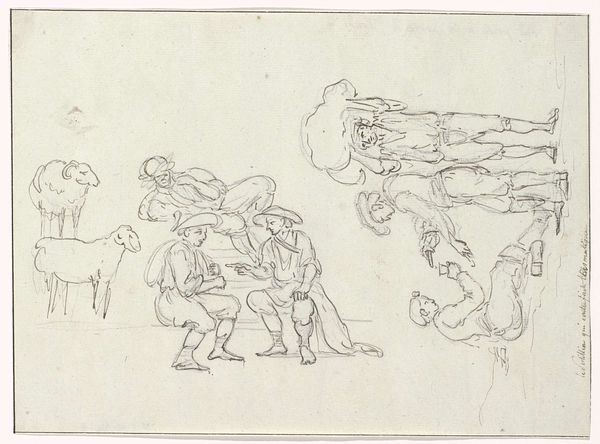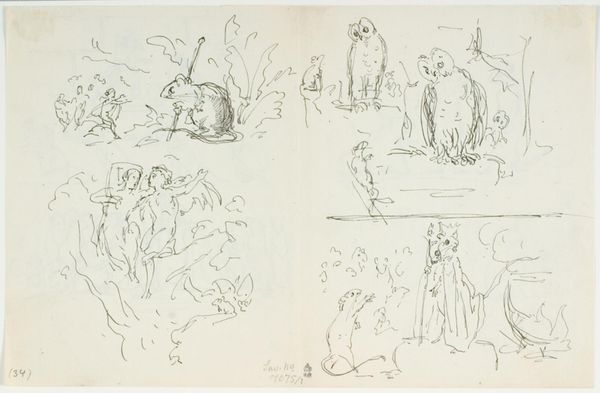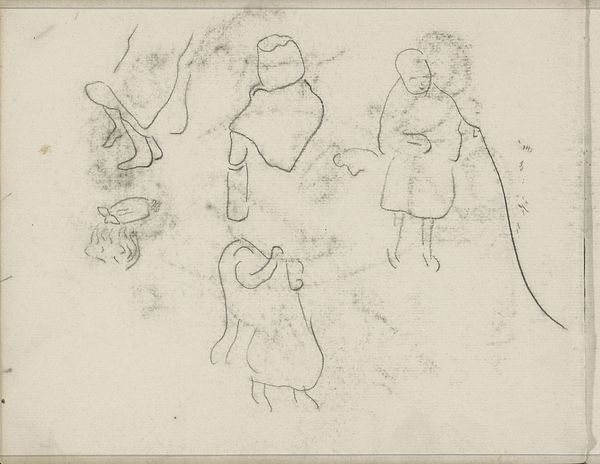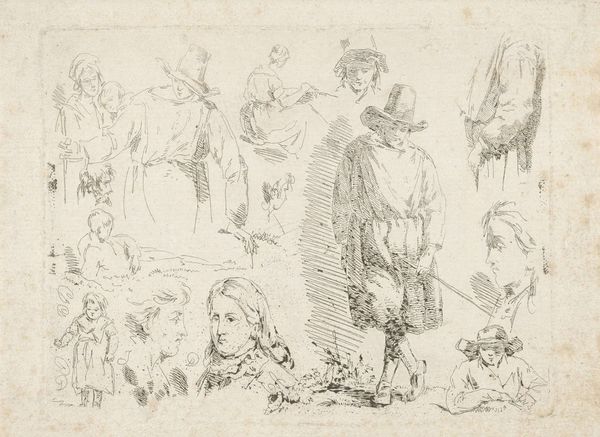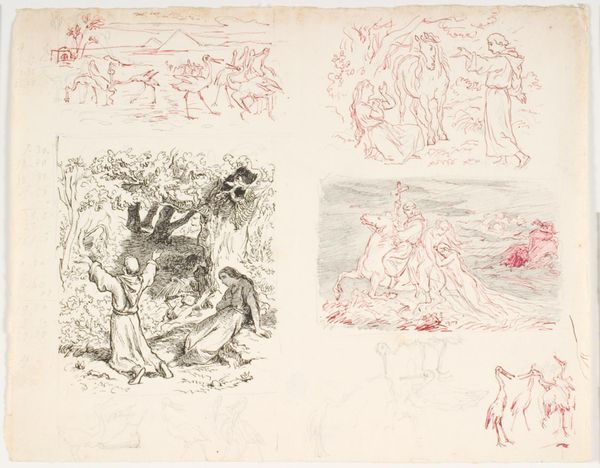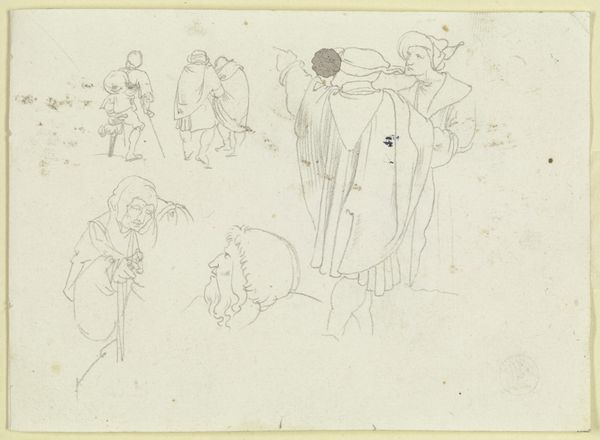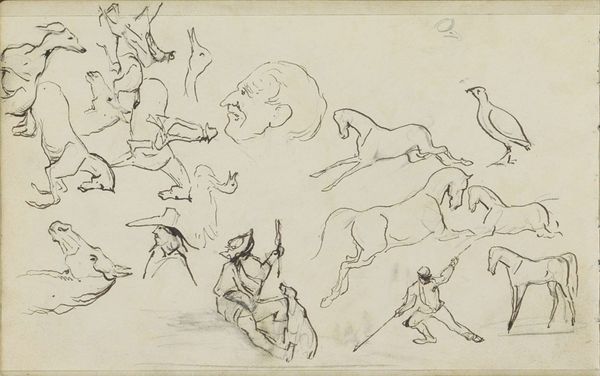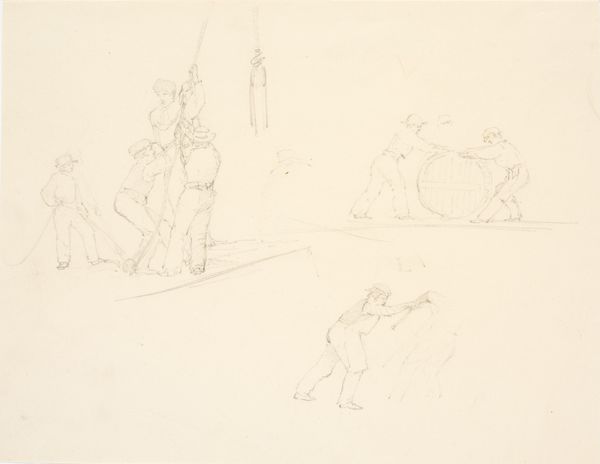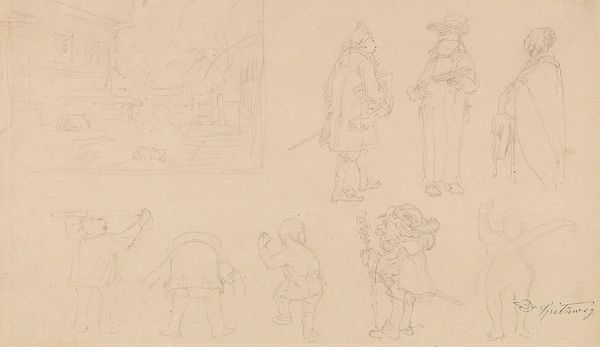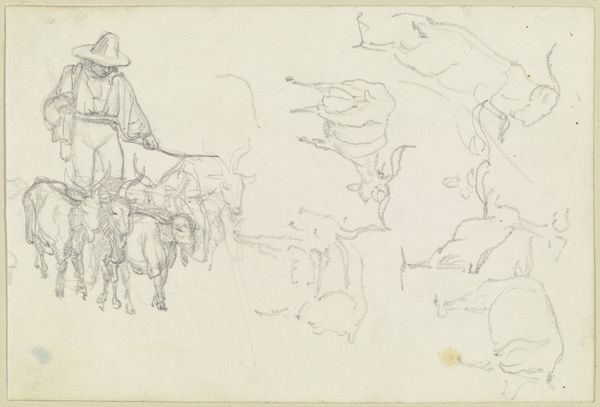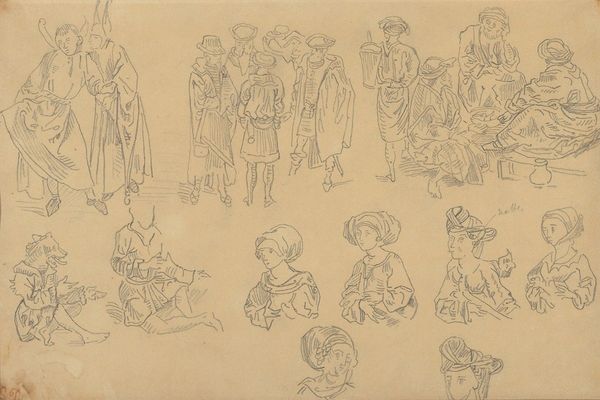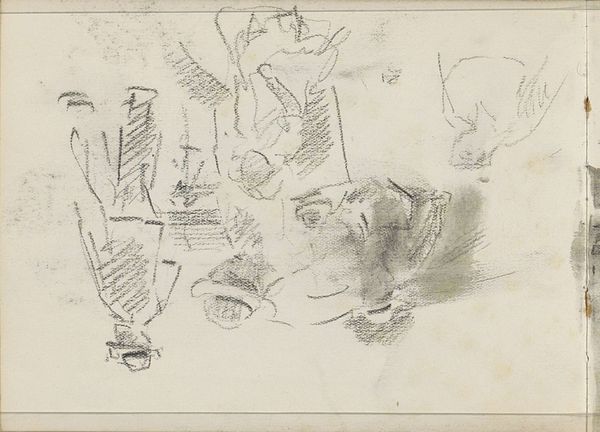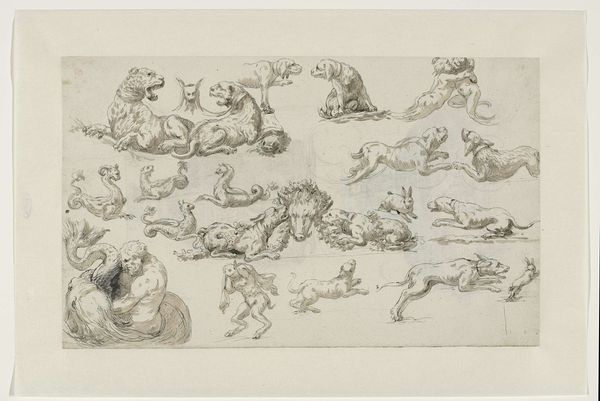
drawing, paper, pencil
#
portrait
#
drawing
#
narrative-art
#
landscape
#
figuration
#
paper
#
sketch
#
pencil
#
sketchbook drawing
#
genre-painting
#
academic-art
Dimensions: height 205 mm, width 328 mm
Copyright: Rijks Museum: Open Domain
Curator: Anthonie Willem Hendrik Nolthenius de Man’s “Schetsblad met vele figuren en dieren,” created in 1814, offers a fascinating glimpse into the artist's process. This drawing, rendered in pencil on paper, presents a lively array of figures and animals in varying poses and arrangements. Editor: My immediate impression is one of dynamism. There's an incredible energy in the way these figures are sketched; a whirlwind of observations captured on a single page. It almost feels like glimpsing someone's fleeting thoughts. Curator: Indeed, the academic style and subject of genre-painting suggest a focus on capturing everyday life. The sheer variety invites an exploration of early 19th-century Dutch society. These portraits and landscapes act as small windows into social relations, fashion, labor, and perhaps even gender roles of the era. Editor: The symbol of the hat worn in multiple sketches suggests more than just fashion. Who is granted this status symbol, who is not? What might this suggest regarding one's class standing? Even seemingly mundane details carry significant weight when considered through that lens. Curator: Precisely! Moreover, the integration of animals speaks volumes about humanity's relationship to nature, highlighting changing conceptions of agriculture and labor at this moment of social transformation. Consider too, how our own biases may color our interpretations – for example, might any of these images be interpreted in ways not aligned with today’s social expectations? Editor: You're right to ask how our perspectives can influence reading this drawing. To see it through the eyes of someone from 1814, one must understand the semiotics of their period. The animals here aren't just representations of nature but visual shorthands with very defined meanings that informed daily existence and one's own cultural standing. This artwork can provide valuable insight into Dutch memory and visual culture. Curator: I think reflecting on Nolthenius de Man’s sketching and its attention to common themes provides an important context in which to better engage with both past and present conditions. Editor: I concur. This piece makes you want to become more attuned to the language of imagery so as to grasp and evaluate these symbols wherever we encounter them in the contemporary world.
Comments
No comments
Be the first to comment and join the conversation on the ultimate creative platform.
